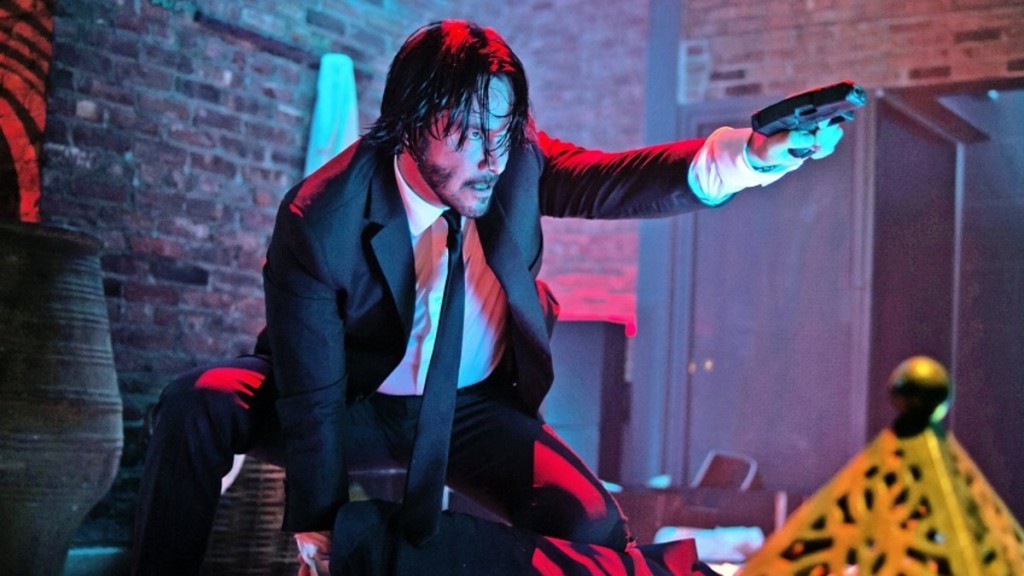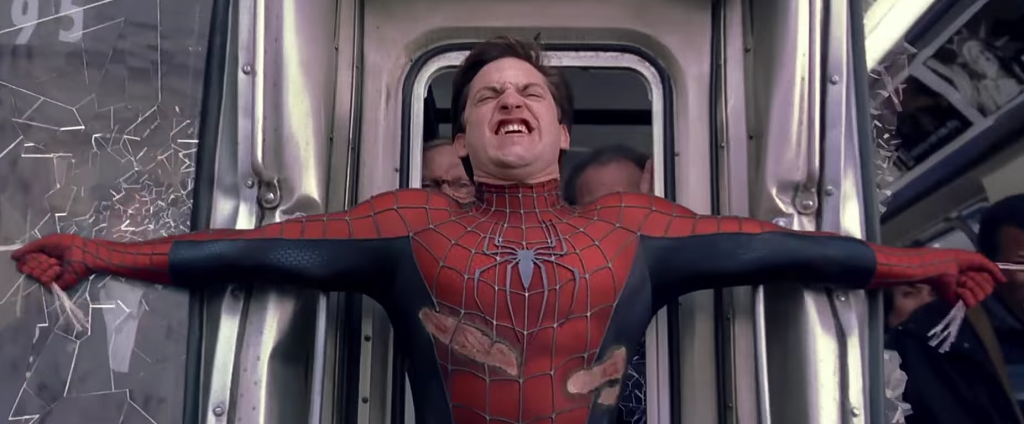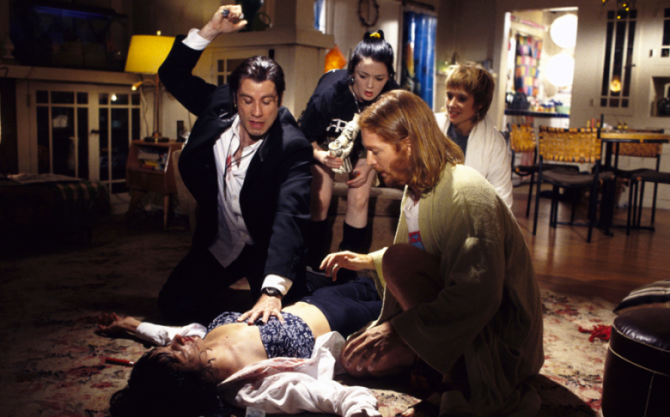We are reaching an epidemic in bad set-piece writing. For those of you who don’t know what set pieces are, they’re the big featured action scenes in a script, your Indiana Jones runs through a cave, your airport battle in Captain America: Civil War, that scene in every Mission Impossible movie where Tom Cruise races a motorcycle through a city at 200 miles per hour. The term “set piece” refers to the olden days when the scene was such a major part of the movie, it needed its own special set. Over time, the term “set piece” has evolved to include any featured extended scene in a movie. A group of survivors in a zombie apocalypse walking into a creepy “vacant” supermarket is a set piece, for example.
We used to have tons of great set pieces in movies. You can count a half-dozen in Raiders of the Lost Ark alone. But over time, something funny happened. In the pursuit to one-up the past, writers and directors erroneously believed that bigger was better. I blame the Lord of the Rings trilogy for this. Those movies had some solid set-pieces. But the war scenes kept getting bigger and more cumbersome with each passing film, until at a certain point you had no idea what was happening onscreen. The person who drove the set-piece off a cliff, though, was Michael Bay. Don’t get me wrong. Michael Bay is a great action director, but his set-piece writing sucks. It’s a bunch of outlandish craziness thrown at you from every angle. Of the five Transformers movies, can you name two memorable set-pieces? I can’t.
The thing is, directors have good intentions. You can’t give the audience the same thing they’ve always had. You need something new. But this notion that bigger is better is plain wrong. Bigger is what got us into this mess. There’s a scene in Valerian where Luc Besson has our hero running through a virtual world as well as the real world at the same time that’s so confusing, we can’t enjoy a second of it. Which is too bad because you can tell he was trying to do something innovative. Even the best overly-complex set-piece I’ve seen this decade – the Captain America: Civil War airport battle – is one I barely remember. I don’t remember why they were fighting, why it had to be at an airport, what the ultimate objective was. It was cool to watch but ultimately empty. Just like everything in screenwriting, the answer is rarely to be more complex. Rather, you want to simplify. And today, I want to give you a formula for achieving that.
I call it: TSDD
And here’s what it stands for…
Time
Space
Distance
Directive
Let’s start with the simplest one, time. A good set piece has urgency. A character has to do something within an uncomfortable amount of time. In Spider Man 2 (the Toby Maguire version), that famous runaway train set piece is made all the more exciting by the fact that he’s running out of time to save the train. Very simple rule to follow. This is the easiest way to turbocharge a set piece.
Next we have space. Space, in this context, refers to the overall space involved in the set piece. The better defined your space is, the more focus your set piece will have. The best way to explain the power of space is in highly contained set pieces. The trash-compacter scene in Star Wars. Or the elevator fight in Captain America: Winter Soldier. But it’s not only getting locked in rooms. It’s any situation where there’s structure to the space. Shazam running over and trying to save a bus that’s about to fall off a bridge. The whole scene takes place inside 80 square feet. Neo and Agent Smith fighting in an underground subway stop. John Wick stalking his prey through an active nightclub. The reason you don’t want the space to be vague is that it’s unclear where characters are, where they can escape to, and what the rules of the environment are. This is what Michael Bay is so guilty of in his Transformers movies. We don’t know where the set starts and where it ends. So it’s just a bunch of characters crashing into each other randomly out of nowhere without purpose.
Moving on, we have distance. Distance refers mainly to chase or running scenes. And, like space, it requires you to let us know what the distance is that the character is attempting to travel. The clearer we are on that, the more invested we’ll be. I’m going to use Raiders because it’s one everyone knows. That opening scene has the best use of distance in any set piece ever. We’ve just traveled down that same straight path into the cave, so we know the exact distance (as well as all the little traps along the way) Indiana must run through in order to get out alive. The climax to Star Wars is another great use of distance. We set up that trench and how long you need to fly down it in order to launch your torpedoes at the exhaust pipe. At the end of The Martian, Matt Damon has to go the distance of the ground up to the ship that’s come to rescue him.
The important thing with distance is that we know where we’re going. If you have a group of characters in a zombie apocalypse movie and they’re minutes away from the zombies breaking into their house, and so they have to make a run for it, it’s always better if they say, “We have to make it to the bell tower” – and we know that the bell tower is 5 blocks away – than if they’re like, “Just run.” It might seem like the chaotic nature of “just run” is better, but I’m telling you, we’re more invested if we know where the destination is. An injured girl stumbling through the woods being pursued by a serial killer is a million times better scene if we know her car is parked on the road just up the trail. If she can only get to that car, she’ll survive!
Finally, we have directive. The cool thing about this one is that even if you’re not strictly following the time/space/distance rule-set, you can still manage to write a good set piece AS LONG AS THE DIRECTIVE IS SUPER STRONG. Directive supersedes time, space, and distance because we’re so focused on the character achieving his directive that we’ll go anywhere with him. “Directive” refers to the directive of the principle character(s) in the scene. So in Pulp Fiction, when Mia’s heart stops, the directive is clear: THE OTHER CHARACTERS NEED TO SAVE HER! So the set piece is kind of all over the place with them driving around and then crashing into the drug dealer’s place who pulls out the famous adrenaline needle and plunges it in her heart. But it works because the directive of saving Mia is so strong.
A couple of final things. You can use ALL of these in a single set piece, or you can pick and choose. The Star Wars trench run uses all of them. Time, space, distance, and directive are incredibly clear. Coincidence it’s considered the best action climax ever? You decide. Also, it’s different writing a set piece on spec than it is writing one for a greenlit movie. If a movie is already being made, the director and writer can visualize a set piece in more of an abstract fashion since the concept doesn’t have to make sense to a reader. But with a spec script, your set piece needs to be clear on paper – all the more reason to go with TSDD.
And that’s it. Now go out and write some killer set pieces. Good luck!




